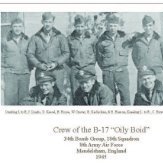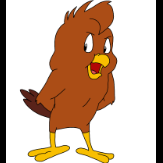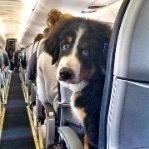-
Posts
615 -
Joined
-
Last visited
-
Days Won
11
patricksparks last won the day on July 8 2022
patricksparks had the most liked content!
Profile Information
-
Gender
Male
-
Location
North Carolina, USA
Recent Profile Visitors
-
 patricksparks reacted to a post in a topic:
Northrop YF-23 Black Widow II 1/32
patricksparks reacted to a post in a topic:
Northrop YF-23 Black Widow II 1/32
-
 patricksparks reacted to a post in a topic:
NOGS at Binh Thuy
patricksparks reacted to a post in a topic:
NOGS at Binh Thuy
-
 patricksparks reacted to a post in a topic:
ICM Gloster Gladiator 1/32 - Viking style
patricksparks reacted to a post in a topic:
ICM Gloster Gladiator 1/32 - Viking style
-
 patricksparks reacted to a post in a topic:
Silver Wings Fokker D.XXI
patricksparks reacted to a post in a topic:
Silver Wings Fokker D.XXI
-
 patricksparks reacted to a post in a topic:
1/48 Tamiya F-14A VF-84 Jolly Rogers
patricksparks reacted to a post in a topic:
1/48 Tamiya F-14A VF-84 Jolly Rogers
-
 patricksparks reacted to a post in a topic:
1/48 Tamiya F-14A VF-84 Jolly Rogers
patricksparks reacted to a post in a topic:
1/48 Tamiya F-14A VF-84 Jolly Rogers
-
 patricksparks reacted to a post in a topic:
Northrop YF-23 Black Widow II 1/32
patricksparks reacted to a post in a topic:
Northrop YF-23 Black Widow II 1/32
-
 patricksparks reacted to a post in a topic:
Northrop YF-23 Black Widow II 1/32
patricksparks reacted to a post in a topic:
Northrop YF-23 Black Widow II 1/32
-
 patricksparks reacted to a post in a topic:
Northrop YF-23 Black Widow II 1/32
patricksparks reacted to a post in a topic:
Northrop YF-23 Black Widow II 1/32
-
 patricksparks reacted to a post in a topic:
Northrop YF-23 Black Widow II 1/32
patricksparks reacted to a post in a topic:
Northrop YF-23 Black Widow II 1/32
-
 chaos07 reacted to a post in a topic:
1:18 Scale B-17G Flying Fortress Forward Fuselage
chaos07 reacted to a post in a topic:
1:18 Scale B-17G Flying Fortress Forward Fuselage
-
 TheBaron reacted to a post in a topic:
1:18 21st Century P-51D Conversion to "B" Model With Metal Finish
TheBaron reacted to a post in a topic:
1:18 21st Century P-51D Conversion to "B" Model With Metal Finish
-
 TheBaron reacted to a post in a topic:
1:18 21st Century P-51D Conversion to "B" Model With Metal Finish
TheBaron reacted to a post in a topic:
1:18 21st Century P-51D Conversion to "B" Model With Metal Finish
-
 Model_Monkey reacted to a post in a topic:
1:18 21st Century P-51D Conversion to "B" Model With Metal Finish
Model_Monkey reacted to a post in a topic:
1:18 21st Century P-51D Conversion to "B" Model With Metal Finish
-
 Shoggz reacted to a post in a topic:
1:18 21st Century P-51D Conversion to "B" Model With Metal Finish
Shoggz reacted to a post in a topic:
1:18 21st Century P-51D Conversion to "B" Model With Metal Finish
-
 JayW reacted to a post in a topic:
1:18 21st Century P-51D Conversion to "B" Model With Metal Finish
JayW reacted to a post in a topic:
1:18 21st Century P-51D Conversion to "B" Model With Metal Finish
-
 Trak-Tor reacted to a post in a topic:
1:18 21st Century P-51D Conversion to "B" Model With Metal Finish
Trak-Tor reacted to a post in a topic:
1:18 21st Century P-51D Conversion to "B" Model With Metal Finish
-
Hi Jay, thank you for your comments !!! The blue on the stars and bars is Tamiya AS-8 Navy Blue spray can, light coat over Tamiya white primer, in fact I painted the entire mid-section of the fuselge white with the Tamiya white primer after I masked and sprayed the squadron codes with Tamiya Nato Black spray can onto freshly steel-wooled aluminum, no primer, I masked the codes over with Tamiya tape, I had very good luck with nothing lifting. I did have an issue with the star in the national marking lifting but I did use a vinyl star stencil that came from an existing set that I think was too aggressively sticky, so far I have had no issues with Tamiya tape as well as regular masking tape pulling up paint, the Tamiya tape for the hard mask lines and regular tape for holding sheets of paper for bulk masking, sometimes touching some of the paint. After priming the center fuselage white I applied the stars and bars, I printed a 3D stencil thinking I could cut masking with it but it didn't work well, Instead I used the printed stencil and a flexible circle template to lightly trace with a pencil the outline of the overall marking, I then used Tamiya flexible vinyl tape and did the outline of the center round and then applied straight runs of regular tamiya tape horizontally for the top and bottom of the bars and caping the ends vertically with the same tape, I cut bar masks for the internal white bars and used an existing vinyl mask star, when I do the star and bars marking on the other side of the fuselage I with reduce the adhesive of the vinyl star stencil by sticking it on my shirt a few times and my fingers... After the stars and bars I masked it over and laid out the invasion strips and sprayed them again with Tamiya Nato Black spry can, light coats. I like the Nato Black, it's slightly off in color from straight black and instantly gives a slightly weathered look... The clear parts that I made were heat formed not vacuum formed, I used a pattern of the canopy but found that pulling a heated peice of petg over one side of the pattern at a time(not trying to get both sides at once)leave the material much more clear as well as more consistently thick, also I leave the vinyl protective sheet on the petg on the side that gets pulled over the pattern, this will also help to keep the part much more clear and you just peel the film off after you pull the part off the pattern, let it cool, the film won't stick to the petg. I used the same process for the rear windows. Hope this helps !!! Pat Pat
-
 Derek B reacted to a post in a topic:
1:18 Scale B-17G Flying Fortress Forward Fuselage
Derek B reacted to a post in a topic:
1:18 Scale B-17G Flying Fortress Forward Fuselage
-
 Shoggz reacted to a post in a topic:
1:18 21st Century P-51D Conversion to "B" Model With Metal Finish
Shoggz reacted to a post in a topic:
1:18 21st Century P-51D Conversion to "B" Model With Metal Finish
-
 Shoggz reacted to a post in a topic:
1:18 Scale B-17G Flying Fortress Forward Fuselage
Shoggz reacted to a post in a topic:
1:18 Scale B-17G Flying Fortress Forward Fuselage
-
A small update on this project, I've been working on my 1:18 scale B-17 project that is covered in aluminum skin and will have to have some paint applied so I thought I would try putting some paint on the P-51 due to it was farther along in the build process that I could do some painting. I found that using Tamiya spray can paint that I could get it to stick to aluminum really well without using self-etching primer( I didn't want to have to overcome the dark base color of the etching primer) so I took some scrap aluminum and using 0000 steel wool rubbed out pieces of aluminum to a nice finish, I blew off the dust and a swipe with a dry paper towel, no washing, nothing, I didn't wait any time to apply paint, I didn't want to allow any oxidation to start. I applied ligth coats of Tamiya spray can white primer, flat black, gloss yellow and silver leaf. out of the 4 test pieces the only one that failed was the silver leaf, it pulld of with regular masking tape which I used on purposed knowing it was much more tacky than Tamiya tape. The other panels survived the test as well as finger nail scratching, I was quite suprised.. So I gave the P-51 a good overall rub down with 0000 steel wool, I wore gloves to do this as to not leave any skin oils on the bare metal, I did my masking immediately so there would be no oxidation also with gloves on. I panted the top of the cowling and nose band Tamiya white primer, just enough to get a decent spray of white, I didn't want a paint build up. Once dry I sprayed yellow testors enamel for the decor on the nose and later masked and sprayed testors blue and then when dry masked out for the anti-glare panel and sprayed testors olive-drab. The enamels all stick really well to the Tamiya lacquer based primer. The "Bald Eagle" logo was painted with a custom made mask, before masking once again rub down with steel wool blow away the dust apply mask and used spray can Tamiya flat black, no primer, it seems that the Tamiya lacquer really likes to stick the freshly steel wool rubbed surface. I also drew up a new spinner and printed it. Pat
-

1:18 Scale B-17G Flying Fortress Forward Fuselage
patricksparks replied to patricksparks's topic in Works in Progress
Not a lot of progress on the B-17, I managed to get quite a bit of the right side fuselage covered with aluminum, had to stop some to sort things out that had to be done or corrected before I could keep skinning. The process is slower than doing flushhead rivets and butted flush panels do to the fact that the individual panels on the B-17 are overlapped, you have to start the panels from the rear and the bottom of the fuselage and apply the panels like roof shingles, one row of panels from the bottom up, next row bottom up overlapping the front edge of the previous row, rinse wash repeat.... And beacause the rivets are raised you have to do all the panels backwards when applying the rivets, it makes for alot of mistakes when you get distracted for any reason... On another note I pulled out my 1:18 scale P-51B conversion project and used it for a paint mule(sort of, took great care doing it) this was to sort out how I would apply paint to the bare metal of the B-17, it worked out great , which makes me alot more relaxed when I get to the finish of the big bird.. Pat -

1/18 Hawker Sea Fury - probably VX620..
patricksparks replied to airscale's topic in Works in Progress
JACKSTANDS .... -

1:18 Scale B-17G Flying Fortress Forward Fuselage
patricksparks replied to patricksparks's topic in Works in Progress
Glued the fuselage halves together, finished up the inside of the nose compartment other than some of the Bombardier's station which I needed to leave off until I finish exterior work around that area. Started to do some "Tin Knocking" .005 hardened aluminum sheet glued with cantact cement. Embossing rivet heads from the backside of the panels before their applied... Pat -

1:18 Scale B-17G Flying Fortress Forward Fuselage
patricksparks replied to patricksparks's topic in Works in Progress
Hi Jay, the perforations were printed into the part, at the time when I was drawing I figured that they would end up printing as recesses, much to my suprise they came out as through holes !!! I think my front wall thickness is about .020 maybe .025 the whole box is hollow and I put no back in it as it would'nt be seen. The tube clamps are printed, bought some soft aluminum wire to simulate all the oxygen lines and based my clamp drawing with the bushing and screw head as one part basing the I.D. of the clamp to fit the wire. Looking forward to some more P-51 updates !!! Pat -

1:18 Scale B-17G Flying Fortress Forward Fuselage
patricksparks replied to patricksparks's topic in Works in Progress
A Little update, still moving ahead, lots of stuff to draw and print !!! Upper turret got the ammo boxes and and suit heater plug in box... Throttle quadrante painted and decororated.. LEFT side of the nose getting close... RIGHT SIDE Progessing FIRST CREW REPORTING, NAVIGATOR, have to put the oxygen hose back on... -

Boeing BOMARC IM-99A Missile in 3D
patricksparks replied to patricksparks's topic in Works in Progress
LSP_Kevin Administrator I sent files to Kevin last year, he may still have them. Feel free to use them if he sends them to you. Pat -

Boeing BOMARC IM-99A Missile in 3D
patricksparks replied to patricksparks's topic in Works in Progress
I'm sorry to tell you that I don't have my 3D files anymore, I ran out of storage on my Laptop and had to delete a bunch of my drawing files. Pat -
This is one that I printed a couple years ago, it's sitting next to a HK Lancaster for size reference... Pat
-

1/32 Trumpeter P-47D - USAF F-47 THUNDERBOLT VIETNAM “FINISHED”
patricksparks replied to DugyB's topic in Imagination Land
Quite a bit of room in that fuselage to put stuff in if you don't need a super charger anymore for low level missions ??? Pat -

What is the diameter of the B-17 top turret?
patricksparks replied to Lee in Texas's topic in Aviation Discussion & Research
Best I can tell the plexiglass dome is 40 inches in diameter and the ring it mounts to is 40 3/4 inches. Hope this helps !!! Pat





